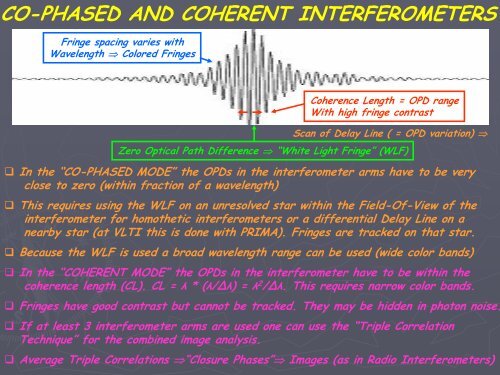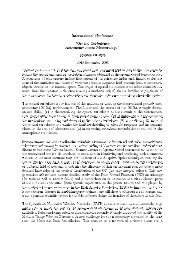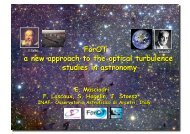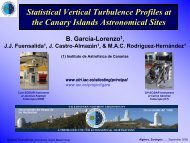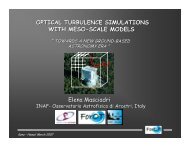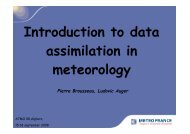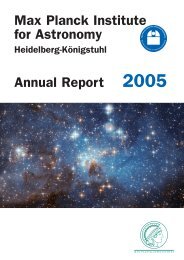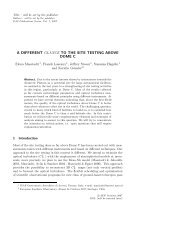ao - ForOT Optical Turbulence Forecasts
ao - ForOT Optical Turbulence Forecasts
ao - ForOT Optical Turbulence Forecasts
You also want an ePaper? Increase the reach of your titles
YUMPU automatically turns print PDFs into web optimized ePapers that Google loves.
CO-PHASED AND COHERENT INTERFEROMETERS<br />
Fringe spacing varies with<br />
Wavelength ⇒ Colored Fringes<br />
Coherence Length = OPD range<br />
With high fringe contrast<br />
Scan of Delay Line ( = OPD variation) ⇒<br />
Zero <strong>Optical</strong> Path Difference ⇒ “White Light Fringe” (WLF)<br />
In the “CO-PHASED MODE” the OPDs in the interferometer arms have to be very<br />
close to zero (within fraction of a wavelength)<br />
This requires using the WLF on an unresolved star within the Field-Of-View of the<br />
interferometer for homothetic interferometers or a differential Delay Line on a<br />
nearby star (at VLTI this is done with PRIMA). Fringes are tracked on that star.<br />
Because the WLF is used a broad wavelength range can be used (wide color bands)<br />
In the “COHERENT MODE” the OPDs in the interferometer have to be within the<br />
coherence length (CL). CL = λ * (λ/∆λ) = λ 2 /∆λ. This requires narrow color bands.<br />
Fringes have good contrast but cannot be tracked. They may be hidden in photon noise.<br />
If at least 3 interferometer arms are used one can use the “Triple Correlation<br />
Technique” for the combined image analysis.<br />
Average Triple Correlations ⇒“Closure Phases”⇒ Images (as in Radio Interferometers)


